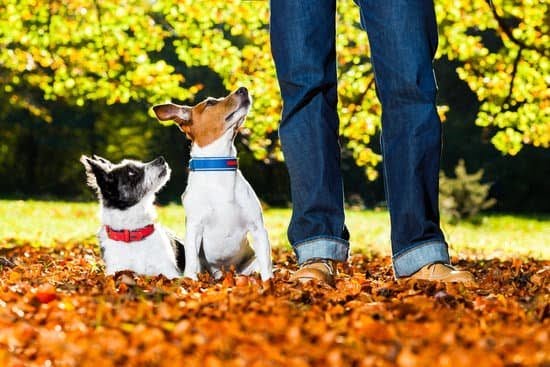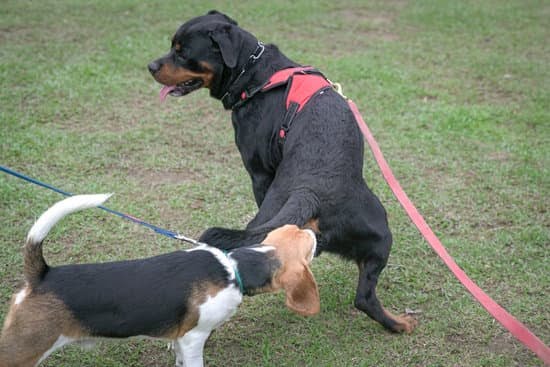Introduction
Dog training yourself can be a rewarding and fulfilling experience, not only for you but also for your beloved pet. From basic commands such as “sit”, “stay” and “come” to more complex tasks such as agility or playing Frisbee, successful and fun dog training relies on consistent reward-based techniques and requires patience, dedication and an understanding of your particular breed of dog’s capabilities. Before starting any type of self-training with your dog, it is important to familiarize yourself with the essential foundations of obedience.
It is helpful to first research the most current training techniques available and recommended by experts for your specific breed of dog. Become familiar with the available tools such as clickers, whistles, leashes or verbal markers that are used widely in positive reinforcement–based training methods. Acquire small portions of food (e.g., treats) or toys that can be efficient rewards during positive reinforcement at various stages in training. It might also help to consult a vet or attend classes on puppy handling prior to embarking on self-training initiatives. By learning about both canine concerning behaviour prevention strategies as well as behavioural modification strategies before initiating any self-training program will provide you with effective ways to keep you pet safe while teaching him/her useful skills required whilst out in public or whilst engaging in neighbourhood activities such as obedience competitions.
While dog owners can teach their pets independently successfully by utilizing correct reward-based Positive Reinforcement Training Techniques, some breeds require more experienced handling due to their temperamental tendencies which necessitates more specific guidance from professionals such as trainers who specialize in certain breeds or from Obedience clubs who offer mentoring sessions . When researching prospective clubs consider local clubs willing to provide support throughout your journey towards obtaining outstanding results when training apart from giving advice about attending shows including Crufts or other Dog Agility events.
Benefits of Self-Training Your Dog
One of the main benefits of dog training yourself is that you can tailor it to your own lifestyle. You don’t have to take your pup to a class and worry about what other people may be doing or offering. You can pick and choose from different methods, such as positive reinforcement or reward-based training, and find what works best for you and your pup. Self-training also allows you to form a stronger bond with your pup through trust-building activities, which can help strengthen their obedience. Plus, self-training not only saves you money but also provides an opportunity for quality bonding time with your pooch! Most importantly, being able to rise up as the designated teacher for your pup will give them necessary guidance in their development as an obedient canine companion.
Preparing Your Dog for Self-Training
Before you can begin to self-train your dog, it is important to have a good foundation. This means making sure that your pup understands basic commands such as sit, stay and lay down. Additionally, taking time to bond with your dog is paramount and allows for more effective training with them. Furthermore, you will be able to monitor their behavior better and notice when they are getting frustrated or excited about a particular activity or situation. Once this bonding and comprehension has been achieved, you can then ensure that positive reinforcement techniques are implemented, such as giving treats when the desired action is completed successfully. Additionally, having toys for game playing helps keep dogs mentally stimulated and able to focus better on tasks. Lastly, having set guidelines like what behaviors are rewarded or not rewarded helps dogs understand expectations in order for more cohesive training abilities.
Developing Clear, Consistent Training Cues
When training your dog, it is important to create and maintain clear, consistent cues. This means that you need to select words or commands that have meaning for the animal, ensuring that your dog will recognize them and respond appropriately. You should also be consistent in how you use these terms so that the dog will understand what they mean each time they are used. If a cue is used inconsistently, the dog may become confused and frustrated as they attempt to learn a behavior or task. Additionally, avoid using too many commands in rapid succession or using overly complicated language when communicating with your dog. Even if your pet appears to understand the message, sticking to simple commands will make it easier for them to learn over time. Practicing patience and an understanding of canine behavior can help ensure successful training!
Teaching Basic Obedience Commands
Dog training is an important part of having a pet, and one of the best ways to do it yourself is through teaching basic obedience commands. Teaching your dog simple obedience commands will help them learn how to behave when you give them instructions. These commands can range from basic ones such as ‘sit’ and ‘stay,’ up to more complex behaviors like recall and down-stay. The key to success with this type of training is consistency; every time you practice with your pet, repeat the same command as often as possible. Reinforce good behavior with rewards like treats and praise, and stay focused on each exercise even if it takes several weeks for them to get the hang of it. Initially, these might seem like lots of work but the effort will pay off in the long run — not only do you have a better behaved dog that understands your expectations, but also you get the satisfaction of knowing that you trained them yourself!
Promoting Positive Behaviors with Positive Reinforcement
Positive reinforcement is one of the most effective methods to use when training a dog yourself. The premise behind positive reinforcement is simple – your dog learns to repeat behavior that led to pleasant consequences and avoid those that don’t. Positive reinforcement can be used anytime your dog does something that you like, such as sit, stay, come, heel, or follow commands. When you notice your pup doing something you want them to do, immediately give a reward of some form; for instance, verbal praise and treats are popular rewards for dogs. Over time, the pattern starts to sink in and the pup will start learning faster.
When using positive reinforcement with a dog, it’s important to remain consistent with rewards so they understand what they did right and can learn how to repeat the behavior. It is also important to make sure that rewards are given while they are misbehaving as well – verbal reminders or shooing motions can work well here too if done properly. Additionally, varying both rewards and discipline (depending on their bad behavior) helps keep attention on expectations of good behavior and shows your pup that there will be consequences for negative behaviors as well as rewards for good ones. Doing so also reinforces clear communication between you both about acceptable behavior. Lastly, remember to take plenty of breaks during training sessions – this helps keep your pup motivated and eager to listen and please each time!
Creating a Routine to Support Self-Training
Self-training your dog can be a challenge, but with the right combination of dedication and consistency, you can teach your pup to behave just the way you want them to. One of the most important aspects of self-training is creating a routine. Establishing routines helps your pup know what is expected of them and helps build long-term habits. When establishing routines, it’s best to stick with the same actions or commands in the same order each time. For example, when going for a walk you may want to remind your pup to sit and stay at the door before leaving each time. Another routine could be having them lay down after eating. Additionally, providing positive reinforcement either during or after training sessions for successful behavior helps reinforce those habits and encourages more good behavior in the future. While self-training can be challenging, it can also be very rewarding. Prior planning for success by creating daily routines will set you up for success in teaching your pup new behaviors and building lasting habits that bring out their unique traits.
Troubleshooting Tips for Self-Training Challenges
When it comes to training your own dog yourself, setbacks are part of the process. It’s important to have a few troubleshooting tips in mind when self-training challenges arise.
First, keep an open dialogue with your veterinarian and/or trainer. They can provide guidance and advice on how to best approach certain issues you are experiencing with your pup’s behavior or health. Additionally, staying connected with online communities that share similar interests can help you find solutions to common problems other pet owners have already tried.
Second, develop a consistent routine for your dog’s daily activities, including set schedules for potty breaks, feedings, walks, training sessions and playtime. Establishing regular behaviors will give the pooch an understanding of expected tasks and desired rewards for successfully completing them.
Third, be patient and consistent –– any form of success with self-training will take generous amounts of time and dedication from both the owner as well as their furry companion! Don’t feel like you need to rush things; gradually introduce new commands or tricks over several practice sessions so as not to overwhelm your pup or end up stumped at a particular step.
Finally, mix it up! Relying on the same methods each day will likely lead your pup to boredom–– take some time off the clock every week to explore different exercises that focus just as much on physical exercise (fetch anyone?) as they do obedience work (such as “sit”). This can refresh their interest in learning while also reinforcing their good habits along the way!
Knowing When to Seek Professional Assistance
When it comes to dog training, some people prefer to do it themselves rather than hiring the help of a professional. While this can certainly be beneficial, there are certain steps where it is highly recommended to seek professional assistance. For example, if your dog has issues with aggression or anxiety that cause them to act out in potentially dangerous ways, then it is probably best to work with a professional who specializes in such behavior problems. Additionally, if you are struggling to properly manage leash reactivity, reactivity when guests enter your home, or behavior like excessive barking and jumping on furniture, then professional help may be necessary.
Additionally, if you have tried basic techniques for behavioral modification and training on your own but have not seen any change in your pet’s behavior after the course of several weeks or months, then seeking professional assistance may well be the only solution left. Experts have access to more advanced techniques and methods which can be useful in modifying difficult behaviors that cannot be completely solved by yourself alone. Furthermore, an experienced trainer can identify potential underlying causes of bad behaviors that you may not consider. Seeking professional help is also important when teaching advanced tasks and firming up existing commands so that you can truly master the art of dog training.
Conclusion
Self-training your dog has many potential benefits. It can help build a strong bond between you and your pet, create a better sense of trust, improve communication between the two of you, and help establish consistent rules and behaviors that benefit both of you. To ensure successful self-training for both you and your dog there are several tips to consider. First, make sure you get the necessary supplies including treats to reward them for good behavior and a leash that gives you control in more challenging situations. Second, dedicate yourself to short daily training sessions with plenty of praise and love throughout. Third, remain consistent with the commands and expectations you set so your dog knows what is expected at all times. Lastly, remember that while dogs learn quickly they can also become easily distracted or uninterested — if this happens take a break before trying again or seek professional help. By following these tips it is possible to successfully train your own dog!

Welcome to the blog! I am a professional dog trainer and have been working with dogs for many years. In this blog, I will be discussing various topics related to dog training, including tips, tricks, and advice. I hope you find this information helpful and informative. Thanks for reading!





